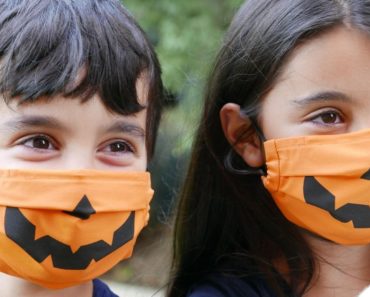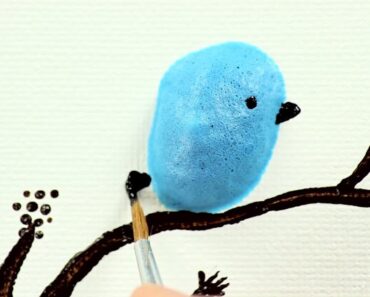The eye is our vision organ and the second most complex organ after the brain. The human eye can distinguish about ten million colors and is one of our five senses. In fact, up to 80% of what we learn is gained through our vision. No wonder our eyes are said to be the windows to our souls.
Have you ever wondered how our eyes work, why do we have two eyes, or how do we cry?
Keep reading as we tell you all about the different parts of our eyes and give you a few fascinating eye facts for kids.
Parts Of Our Eyes
Some of the following mentioned parts of your eyes are visible to us when we look in the mirror or into someone else’s eyes. However, there are other parts that cannot be seen but play important roles.
- Sclera: The white part of the eye that forms a supporting wall of the eyeball is the sclera. It is an opaque, fibrous, and protective outer layer of our eye. It is believed that because the sclera occupies the larger exposed eye surface, it is possible for us to identify where another individual is looking (1). The exterior part of the sclera is smooth and white, whereas the interior part of it is grooved and brown.
- Cornea: The transparent and bulging surface forming the front portion of the eye is the cornea. It helps in focusing the vision and refracting or bending light. The cornea borders the sclera.
- Pupil: The pupil appears as a black dot in the center of the eye. It’s a hole covered by the cornea. It lets in light and focuses the light on the retina. The muscles located in the iris control the pupils (2). The amount of light, our health conditions, and our emotions affect the size of the pupil. For instance, the pupils dilate in low light and constrict when we are angry or scared (3).
- Iris: The colored part of the eye that regulates the amount of light entering the eye (which reaches the retina) is the iris (4). The iris has the pupil in the center, and the sclera surrounds it. It contains the iris sphincter muscle, also known as the pupillary muscle, and the dilator muscle, which control the diameter of the pupils when they constrict and dilate, respectively (5).
- Lens: The lens is located behind the iris and the pupil. It is a transparent, biconvex, and flexible tissue that changes its curvature to focus light on the retina (6).
- Ciliary muscles and body: These are attached to the lens. The ciliary body produces the fluid, called aqueous humor, in the eye, while the ciliary muscles help change the shape and curvature of the lens when our eyes focus on an object (6).
- Conjunctiva: The conjunctiva is a clear thin membrane covering the sclera and the inner surface of the eyelid. It helps lubricate the eye by producing mucus and tears and protects the eye from microbes. Its contribution in tear formation is very small compared to the lacrimal glands (7).
- Retina: The retina is a light-sensitive, thin layer of tissue lining the inside of the eye. It receives focused light from the lens and converts it into neural signals. These signals are transferred to the brain via the optic nerve. The conversion of light into impulses is done by photoreceptor cells in the retina. There are two types of photoreceptors:
- Rods: These provide a scotopic vision (vision in low light), as they function in low light levels. The vision provided is peripheral (or side) vision. Rods are sensitive to movement or motion and are less sensitive to color perception. A normal retina contains approximately 120–150 million rods.
- Cones: These provide a photopic vision (vision in daylight or bright light conditions) and color vision. The vision provided is central (straight ahead). A normal retina contains approximately 6–7 million cones.
Macula, a small sensitive area located near the center of the retina, provides central vision. The fovea, a pit in the center of the macula, provides the sharpest detailed vision. Cones are mostly concentrated in the fovea. There is a point called the ‘blind spot’ in the retina where the optic nerve connects, and there are no light-sensitive photoreceptors at this spot (8).
- Chambers: There are three chambers in the eyes:
- The anterior chamber lies between the cornea and the iris.
- The posterior chamber lies between the iris and the lens.
- The vitreous chamber lies between the lens and the retina.
The anterior and posterior chambers are filled with the aqueous humor, and the vitreous chamber is filled with the vitreous fluid. Aqueous humor is a clear fluid that nourishes the eye and keeps it inflated (9). Vitreous humor is a clear jelly-like fluid that fills the eyeball behind the lens, supporting the eye and transmitting light to the retina. The aqueous humor and vitreous humor nourish the lens.
- Optic nerve: The optic nerve transmits all visual information from the retina to the brain. It controls the visual impulses for neurological reflexes, such as the light reflex and the accommodation reflex. It is called the second cranial nerve of the 12 cranial nerves and part of the central nervous system.
- Tear gland: Known as the lacrimal gland, it is an almond-shaped exocrine gland located at the outer corner of the eye. The gland secretes water, electrolytes, proteins, and mucin (lacrimal gland fluid). It is the major contributor to the aqueous humor. Each time the eye blinks, tears moisten the eye. Sometimes, the eyes produce more tears for protection, helping wash away unwanted foreign bodies, such as dust, smoke particles, and irritants (10).
- Choroid: It is a spongy vascular layer of the eye between the retina and the sclera. It delivers oxygen and nutrients to the outer half of the retina (11).
- Eyelids: It is the fold of skin that protects the eyes by closing them frequently. This motion of opening and closing of eyelids is voluntary but can also be involuntarily controlled by the brain (12).
- Eyelashes: These are hairs that grow around the edge of the eyelids. They function as dust catchers, trapping debris that can reach the eyes and cause infection or obstruction in vision. Eyelashes form an almost impenetrable barrier against foreign bodies (13).
- Eyebrows: To provide a clear vision for the eyes, the eyebrows help remove unwanted moisture, such as sweat and raindrops, from the eyes. The shape of the eyebrows helps channel the moisture to flow sideways from the eyes and serve in blocking bright light (13).
How Do The Eyes Work?
Our eyes sense the light generated by a light source or light rays reflected from objects. The light enters the cornea and pupil, and the iris controls the amount of light entering through the pupil. Then the light passes through the lens and is focused on the retina.
As the focused light hits the retina, the photoreceptors convert the light into nerve impulses. These impulses are carried through the optic nerve to the brain, where the brain processes and turns it into an image (14).
The eyes capture images in an upside-down form, and the brain flips the image, helping us see things the right side up.
Why Do Humans Have Two Eyes?
The two eyes provide a binocular vision needed for accurate depth perception. Our two eyes view an object from different angles, and our brain compares and processes these two sets of information to form a single image (15). This process is called convergence. The two eyeballs give us a depth perception to compare two images and determine how far away an object is from us.
30 Facts About Eyes For Kids
Here are some interesting facts about our eyes (16) (17) (18) (19) (20).
- The muscles of the eyes are the most active muscles in the human body.
- Eyelashes have an average lifespan of five months.
- Newborn babies only make crying sounds, and their eyes cannot produce tears until they are around the age of two weeks, as their tear gland ducts are underdeveloped.
- The duration of a blink is 100–150 milliseconds on average.
- You blink about 12–15 times in one minute.
- The human eye has about two million moving parts that work to help you see.
- In most people, the eyes stop growing in their early 20s.
- The human eyes can have one of the sixteen different colors according to the Martin scale.
- Brown is the most common eye color in humans.
- A human can have two different-colored eyes. This difference in color in the two eyes of the same person is called heterochromia iridum (heterochromia iridis).
- Pupil is derived from the Latin word pupa, meaning doll.
- A retina scan is now commonly used for security purposes instead of the fingerprint scan. Fingerprints have 40 unique characteristics, whereas the iris has 256.
- The human eye can detect over 10 million colors, but it can’t detect ultraviolet and infrared lights.
- Our eyes focus on about 50 different objects every second.
- It is impossible to sneeze with your eyes open. Try it!
- The optic nerve contains more than a million nerve cells.
- We actually see with our brain and not our eyes. Our eyes capture light and send the data to the brain for forming images.
- Red eyes in photographs appear due to the light from the flash bouncing off our capillaries in the eyes.
- If the human eye were a digital camera, it would have a resolution of 576 megapixels. The iPhone 12 has 12 megapixels.
- It is believed that, initially, every human being had only brown eyes, and the other colors evolved gradually over a period of time.
- The first blue-eyed person is said to have lived 10,000 years ago. And every blue-eyed person in the world shares a common ancestor.
- Health conditions such as diabetes and high blood pressure can be detected during an eye test.
- With the right weather conditions and lighting, the human eye can see the light of a candle from 14 miles away.
- All babies are color blind at the time of birth. They can differentiate colors only two weeks after birth.
- People normally read 25% slower on a screen than on a paper.
- The fear of the eyes is called ommatophobia.
- Only one-sixth of the human eyeball is exposed.
- Everyone has one eye slightly stronger than the other eye.
- The nose gets runny when a person cries, as the tears drain into the nasal passages.
- The eyes can also get sunburned like the skin, and the condition is called photokeratitis, causing pain, redness, and tears. Wear good sunglasses to protect your eyes from UV rays.
The eyes, like the other organs of the body, are subject to stress and injury. A nutritious diet, regular exercise, and stress-free life can help maintain eye health. Get an eye checkup done if your child experiences any discomfort while reading, headaches after reading, and mild blurring of vision. We hope these facts help stir your child’s curiosity about the various organs in our body.

































